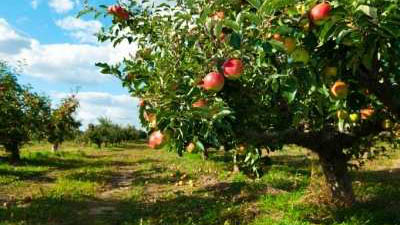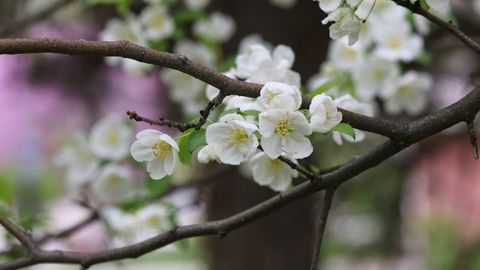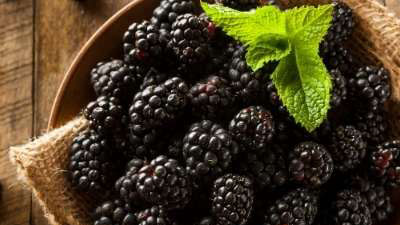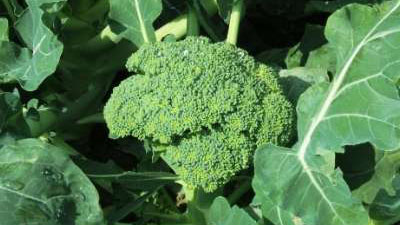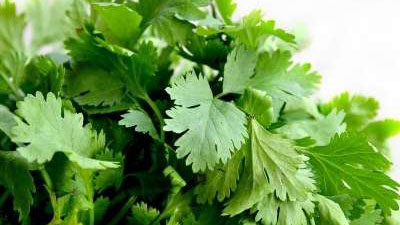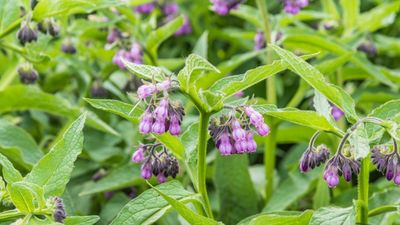Home Vegetable Garden-Variety Recommendations for Utah
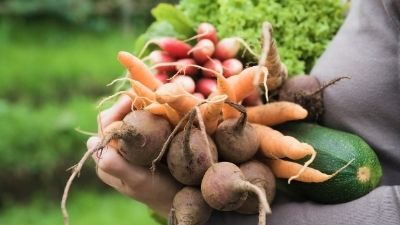
There are so many vegetables varieties available, how do you select good ones for the home garden? Which ones are adapted and grow well in my area? This bulletin gives you some answers to these questions. It lists some of the better vegetable varieties for Utah. Since varieties vary in disease resistance and maturity characteristics, it is important to select ones that are adapted to our area. Should I grow a hybrid? Does it have disease resistance? When will it mature. What things should I think about before planting the garden?
Open-Pollinated vs. Hybrid Varieties
Most vegetables grown were produced from open-pollinated varieties. Recently, hybrid seeds have been marketed for use in the home garden. Hybrid varieties tend to be more vigorous, grow uniformly, have better disease resistance and greater productivity than open-pollinated varieties. Therefore, it is wise to compare varieties to determine which performs best in your area.
Disease Resistance
Most hybrids and many open-pollinated varieties have resistance to some vegetable diseases. Selecting varieties with disease resistance can reduce crop loss in the home garden. Try to use varieties with multiple disease resistance. Seed catalogs and seed packets list the disease to which a variety is resistant.
Maturity Characteristics
The number of days to mature a vegetable varies. Early vegetables should mature in all areas of Utah. Crops with longer maturity periods and those that require warm temperatures may not mature in areas of the state where early frosts occur. Consult your local county extension office for information on the frost free period and planting dates for your area.
Other Factors
Before planting the garden, it is best to do some planning. Is the location acceptable? Is the soil fertile? Is there water near by? Does the site receive enough light? Is it close to home or large enough for your families needs?
Consider these points about the vegetables you grow:
- Know what to plant
- Know when to plant
- Know when to harvest
- Be ready to replant
Without proper planning space may not be utilized efficiently. Sketch out the garden area, select the vegetables you want, figure out your planting dates and match these to the available space. Think about the shading effects of tall plants on small plants. Plant the asparagus or rhubarb in a location where it will not interfere with the rest of the garden. Why plant broccoli if no one eats it. Are you planting enough tomatoes to can or corn to freeze? Remember, some plants take up a lot of space but don’t yield a lot (e.g. corn). If space is at a premium, you may want to grow something else.
Think about growing vertical. Trellises, stakes, and fences are useful ways to grow more in a small area. Grow some plants in containers or among the flowers. Have you considered raised beds, broadcast seeding, square-foot gardening or hanging baskets to increase the amount of usable space?
Try succession planting, intercropping or companion planting to increase garden productivity. Plant small areas at set intervals to achieve a continuous supply of produce. Intercrop early maturing varieties with later maturing ones to increase space utilization. Grow
crop which complement each other as companions.
Variety Selection
If you are not satisfied with your variety selections, this bulletin can offer some alternatives. Test that new variety next to the one you presently grow. Consult other resources (seed catalogs, gardening books, and magazines) for more information on new varieties and
growing techniques. Talk to your local county extension educator, a knowledgeable gardener or friend. These sources can advise you on what grows well in your area.
Many seed companies are happy to send out their home gardening catalogs upon request. Some companies (see #3,#7) specialize in vegetables adapted to our growing conditions. It is best to order seed from seed catalogs during the winter. This ensures that the company still has the seed and you will receive it in time to plant.
Seeds may also be purchased from garden centers, discount stores, super markets and nurseries. However, these outlets may not have all the varieties listed in this publication. Consult your garden center or nursery for specific information on variety availability. Often they have varieties that are suited to that growing area. If you want specific varieties, ask if they can get them. Most nurseries grow and sell varieties that people ask for.
The varieties listed are ones that do well in most areas of Utah. The number in parentheses (65) indicates the approximate days to maturity from seed or transplanting. Crops normally transplanted are also listed. The number under “SOURCES” refers to the seed companies listed at the end of the bulletin. Hybrids are indicated by an (H). All American Selections (AAS) are varieties that do well in all areas of the United States. Fruit, kernel, or tuber color is listed where appropriate. Use the Vegetable Planting Chart to help plan in-row and between-row spacing and common planting dates for Utah.
The exclusion of other varieties or seed companies from this list in no way indicates that they are undesirable.
Recommended Vegetable Varieties
Asparagus
(Perennial) - transplanted (check for availability of crowns and varieties)
Bean
- Bush (green) type
- Blue Lake (58): Sources 1-7
- Derby (AAS) (57): Sources 2-5
- Jade (53): Source 8
- Slenderette (53): Sources 3,4
- Strike (45): Source 3
- Dry
- Great Northern (85): Sources 2,7
- Pinto (90): Source 4
- Red Kidney (95): Sources 2,4,7
- Lima
- Forkhook 242 (75): Sources 2,4,8
- Pole (green) type
- Blue Lake (63): Sources 1-7
- Kentucky Blue (AAS) (58): Sources 2,3,4,5,8
- Wax (yellow) type
- Gold Crop (54): Sources 1,2,3,6
Beet
- Cylindra (60): Sources 3,4,5,7
- Detroit Dark Red (63): Sources 1-7
- Golden Beet (Yellow) (55): Sources 1,2,7
Broccoli
(transplanted)
- Everest (83): Source 6
- Galleon (75): Sources 1,6
- Green Comet (AAS) (H) (55): Sources 1-5
- Packman (H) (55): Sources 2,3,4,5,6,8
- Premium Crop (H) (65): Sources 1,3,4,5,6,7
Brussels Sprouts
(transplanted)
- Jade Cross (H): Sources 1,2,4,6
Cabbage
(transplanted)
- Danish Ballhead (100): Source 3
- Golden Acre (58): Sources 2,3,7
- Ruby Ball (H) (red) (70): Sources 3,5
- Savoy Ace (H) (78): Sources 1,5
Carrot
- A-Plus Hybrid (H) (71): Sources 1,2,3,4,6
- Danvers Half Long (73): Sources 2,3,5,7
- Pioneer Hybrid (H) (67): Source 3
- Scarlet Nantes (68): Sources 3,4,5,6,7,8
- Thumbalina (AAS) (70): Sources 2,3,4,7,8
Cauliflower
(transplanted)
- Early Snowball (52): Source 3
- Ravella (H) (70): Sources 4,6
- Self-Blanche (68): Sources 2,3,7
Celery
(transplanted)
- Utah 52-70 (H) (95): Sources 3,4
Cucumber
- Pickling
- Bush Pickle (u) (45): Sources 2,4
- Calypso (H) (52): Sources 4,5,6
- Wisconsin SMR-18 (56): Sources 2,3
- Slicing
- Fanfare (AAS) (52): Source 6
- Jet Set (H) (59): Source 3
- MarketMore 76 (58): Sources 2,3,5,6,7
- Salad Bush (AAS) (H) (57): Sources 1,3,4,5
- Sweet Slice (H) (63): Sources 1-6
- Sweet Success (AAS) (H) (55): Sources 1-5
Eggplant
(transplanted)
- Dusky Hybrid (H) (60): Sources 1,3,5,6
- Ichiban (58): Sources 2,3,4,5
Kohlrabi
- Purple Vienna (50): Sources 2,3,7
Lettuce
- Bibb or Butterhead
- Buttercrunch (64): Sources 1,2,3,4,6,7,8
- Prizehead (64): Sources 2,3
- Head
- Ithaca (72): Sources 2,5,6,7
- Salinas (70): Source 3
- Green Ice (45): Sources 1,4
- Oakleaf (45): Sources 2,3,8
- Red Sails (AAS) (45): Sources 1,2,3,4,5,6,8
Muskmelon (Cantaloupe)
(transplanted)
- Ambrosia (H) (86): Sources 1,4,5
- Classic Hybrid (H) (80): Source 5
- Crenshaw (100): Source 3
- Earlidew (Honeydew) (H) (75): Sources 3,5,6,8
- Hales Best (85): Sources 2,3
- Mission (H) (85): Source 3
- Rocky Sweet (80): Sources 3,4,5
- Summit Hybrid (H) (78): Sources 3,6
Onion - all
- Crystal White Wax Pickler (90): Sources 1,3,4
- Evergreen White Bunching (green) (60): Sources 1,4,5,8
- Fiesta (H) (100): Source 4
- Sweet Sandwich (100): Sources 1,2,3,4,5,6,8
- Utah Yellow Sweet Spanish (110): Sources 3,5
- Walla Walla (90): Sources 1,2,3,8
Pea
- Early Frosty (64): Sources 3,5
- Lincoln (67): Sources 2,3,6,7
- Novella (64): Sources 2,3,7,8
- Oregon Sugar Pod II (68) (edible pod): Sources 1,2,3,5,7
- Patriot (58): Sources 3,4,6
- Sugar Daddy Stingless (74) (snap pea): Sources 1-6
- Sugar Snap (AAS (70) (snap pea): Sources 1,2,3,5,7,8
Pepper
(transplanted)
- Hot
- Anaheim Chili (79): Sources 1,2,3,4,5
- Jalapeno (75): Sources 1-6
- Long Red Slim Cayenne (72): Sources 4,6
- MexiBell (AAS) (58): Sources 1,3,4,5
- Super Chili Hybrid (AAS) (H) (75): Sources 2,5
- Thai Hot (75)
- Sweet
- Big Bertha (H) (72): Sources 2,3,6
- Gypsy (H) (Yellow) (60): Sources 1,2,3,4
- Sweet Banana (Yellow) (65): Sources 1,2,4,5,6
- Yolo Wonder L (75): Sources 3,5,6
Potato - seed pieces
- Kennebec (white) (125): Sources 1,2,4,6
- Norgold Russett (white) (125): Source 2
- Red Norland (red) (125): Source 2
- Red Pointer (red) (125): Sources 1,2,4
- Russet Burbank (white) (125): Source 4
Pumpkin
- Atlantic Giant (120) (very large): Sources 2,3,6
- Autumn Gold (AAS) (98): Sources 1,2,3,4,5,6,8
- Baby Bear (AAS) (105): Sources 3,4,5
- Jack Be Little (90): Sources 1,2,3,4,5,8
Raddish
- Champion (AAS) (28): Sources 2,3,6,7
- Easter Egg (H) (25): Sources 1,2,3,4,8
- Icicle (white) (30): Sources 1,2,3,4,5,6,8
Rhubarb (perennial)
(transplanted) - check for availability of crowns and varieties
Spinach
- Melody (H) (43): Sources 3,4,5
- Skookum (H) (41): Source 5
Squash
- Summer
- Black Jack (H) (Green) (55): Sources 2,3
- Gold Rush (H) (Yellow) (50): Sources 2,3,4,5,6,8
- Gourmet Globe (50): Sources 4,5
- Peter Pan Hybrid (AAS) (H) (50): Sources 1,3,4,5
- Scallopini (50): Source 6
- Sunburst Hybrid (AAS) (H) (55): Sources 3,4,5,8
- Zucchini Elite (H) (Green) (48): Source 3
- Winter
- Buttercup (100): Sources 1,2,3,5,6,7,8
- Cream of the Crop (AAS) (85) (acorn): Sources 2,3,4,5,8
- Early Butternut (H) (75): Sources 2,3,4,5,6
- Pink Banana (100): Sources 2,3
- Sweet Mama (AAS) (85): Sources 1,3,4,5,6
- Table Ace (H) (75) (acorn): Sources 2,4
Sweet Corn
- Standard
- Earlivee (H) (Yellow) (63): Sources 3,6,7,8
- Jubilee (H) (Yellow) (82): Sources 3,5
- Sugar Enhanced
- Breeders Choice (H) (BiColor)(70): Source 3
- Incredible (H) (Yellow) (85): Source 3
- Maple Sweet (H) (Yellow) (68): Source 7
- Miracle (H) (Yellow) (85): Sources 1,2,3,6
- Platinum Lady (H) (White) (80): Sources 2,5,6,7
- Sugar Buns (H) (Yellow) (72): Sources 3,6,7,8
- Super Sweets
- Honey & Pearl (AAS) (H) (BiColor) (78): Sources 3,5,8
- How Sweet It Is (AAS) (H) (White) (85): Sources 1-6
- Illini Extra Sweet (H) (Yellow) (85): Source 2
- Phenomenal (H) (BiColor) (85): Sources 3,6
- Super Sweet Jubilee (H) (Yellow) (82): Source 5
Swiss Chard
- Lucullus (50): Sources 2,3,4
- Ruby or Rhubarb (60): Sources 1-6
Tomato
(transplanted)
- Celebrity (AAS) (H) (70): Sources 1,2,3,4,5,6,8
- DX 52-12 (70): Source 3
- Early Cascade (H) (65): Sources 3,8
- Longkeeper (78): Sources 1,2,7
- Oregon Spring (52): Sources 3,7,8
- Pole King (H) (75): Sources 2,5
- Presto (H) (55) (Cherry): Source 3
- Roma (75): Sources 2,4
- Royal Chico (75): Sources 3,4,5
- Sweet 100 (H) (60) (Cherry): Sources 1-6
Watermelon
(transplanted)
- Crimson Sweet (90): Sources1,2,3,5,6
- Golden Crown (AAS) (Yellow) (75): Sources 4,5
- Mickylee (75): Sources 6
- Yellow Baby (H) (Yellow)(70): Sources 1,4,6
Sources of Seeds
- W. Atlee Burpee Co.
300 Park Ave.
Warminster, PA 18974 - Gurney Seed Co.
110 Capital St.
Yankton, SC 57079 - Mtn Valley Seed Co
1800 W. South Temple
Salt Lake City, UT 84115 - Park Seed Co.
Cokesbury Rd
P.O. Box 46
Greenwood, SC 29648-0046 - Twilley Seed Co. Inc.
P.O. Box 65
Trerose, PA 19047 - Stokes Seeds Inc.
Box 548
Buffalo, NY 14240 - Garden City Seeds
1324 Red Crow Rd
Victor, MT 59875-9713 - Johnny’s Select Seeds
Foss Hill Rd
Albion, ME 04910-9731
Vegetable Planting Chart
| Vegetable | Planting Dates* | Days to Maturity | Weeks from Seeding to Transplanting | Planting Depth (in) Seed Only | Planting Spacings (in) | Suggested Row Length (ft)^ | |
|---|---|---|---|---|---|---|---|
| In Row after Thinning | Between Row | ||||||
| Asparagus (crowns) | Mar 1-May 1 | 2 years | 10-12 | 6-8 | 12-18 | 36-60 | 100 |
| Bush Beans (green/wax) | Mar 1-Jul 1 | 65-90 | 1-2 | 3-4 | 18-24 | 100 | |
| Dry Beans | Mar 1-Jun 1 | 50-70 | 1-2 | 3-4 | 18-24 | 100 | |
| Lima Beans | Mar 1-May 1 | 90-100 | 1-2 | 3-4 | 18-24 | 200 | |
| Beets | Mar 1-Jul 1 | 50-70 | ½-1 | 2-3 | 12-18 | 50 | |
| Broccoli | Mar 1-Jul 15 | 55-75 | 4-6 | ¼-½ | 18-24 | 24-30 | 50 |
| Brussels Sprouts | Mar 1-May 15 | 90-100 | 4-6 | ¼-½ | 18-24 | 24-30 | 30 |
| Cabbage | Mar 1-Jul 1 | 60-90 | 4-6 | ¼-½ | 18-24 | 24-30 | 30 |
| Carrots | Mar 1-Jun 1 | 60-80 | ¼-½ | 1-2 | 12-18 | 100 | |
| Cauliflower | Mar 1-Jul 1 | 60-95 | 4-6 | ¼-½ | 18-24 | 24-30 | 50 |
| Celery | Mar 1-Jun 15 | 100-125 | 10-12 | ¼ | 4-6 | 18-24 | 25 |
| Cucumber | Mar 1-Jun 1 | 50-70 | 4 | ¼-½ -1 | 9-12 | 36-48 | 50 |
| Eggplant | Mar 1-Jun 1 | 60-80 | 8-10 | ¼-½ | 18-24 | 24-30 | 30 |
| Endive | Mar 1-May 15 | 80-100 | ¼-½ | 8-12 | 12-18 | 20 | |
| Garlic† | Mar 1-Apr 15 | 100-120 | 1-2 | 3-4 | 12-18 | 20 | |
| Kale† | Mar 1-Aug 1 | 50-60 | ¼-½ | 8-15 | 18-24 | 30 | |
| Kohlrabi | Mar 1-May 1 | 50-70 | ¼-½ | 4-8 | 18-24 | 25 | |
| Leek | Mar 1-May 1 | 100-130 | 6-8 | ¼-½ | 2-3 | 12-18 | 25 |
| Lettuce-Head | Mar 1-May 1 | 70-85 | 4 | ¼-½ | 8-15 | 18-24 | 25 |
| Lettuce-Leaf | Mar 1-May 1 | 45-60 | 4 | ¼-½ | 6-8 | 18-24 | 25 |
| Muskmelon | Apr 15-Jun 15 | 80-90 | 4 | ¼-½ -1 | 24-36 | 36-48 | 40 |
| Mustard | Mar 1-May 15 | 35-45 | ½ | 6-8 | 18-24 | 25 | |
| Okra | May 1-Jun 15 | 50-60 | ½-1 | 12-15 | 24-30 | 25 | |
| Onions-Seeds+ | Mar 1-Apr 15 | 100-120 | ¼-½ | 2-3 | 12-18 | 50 | |
| Onions-Sets | Mar 1-May 1 | 90-100 | 1-2 | 2-3 | 12-18 | ||
| Onions-Transplants | Mar 1-May 1 | 90-100 | 6-8 | 1-2 | 2-3 | 12-18 | |
| Parsnip | Mar 1-May 15 | 100-120 | ½ | 3-4 | 18-24 | 50 | |
| Peas | Mar 1-May 15 | 50-70 | 1-2 | 2-3 | 12-18 | 50 | |
| Peppers | Apr 15-Jun 1 | 60-80 | 6-10 | ¼-½ | 15-18 | 24-30 | 50 |
| Potatoes | Mar 1-May 1 | 100-130 | 4 | 9-12 | 24-36 | 200 | |
| Pumpkin | May 1-Jun 15 | 90-120 | 4 | 1-2 | 36-48 | 48-60 | 40 |
| Radish | Mar 1-Sep 1 | 25-35 | ½ | 1-2 | 6-12 | 25 | |
| Rhubarb (crowns) | Mar 1-May 1 | 1-2 | 10-12 | 4-6 | 18-24 | 24-36 | 20 |
| Spinach† | Mar 1-May 1† | 40-50† | ¼-½ | 3-6 | 18-24 | 25 | |
| Summer Squash | May 1-Jun 1 | 40-60 | 1-2 | 24-36 | 36-48 | 25 | |
| Winter Squash | May 1-Jun 15 | 80-100 | 1-2 | 24-48 | 48-60 | 40 | |
| Sweet Corn | Apr 1-Jun 1 | 65-95 | 1-2 | 9-12 | 30-36 | 400 | |
| Swiss Chard | Mar 1-Jul 1 | 50-60 | ¼-½ | 4-8 | 18-24 | 25 | |
| Tomato | Apr 15-Jun 15 | 60-90 | 4-6 | ¼-½ | 24-36 | 36-48 | 120 |
| Turnip | Mar 1-May 1 | 40-60 | ¼-½ | 4-6 | 18-24 | 25 | |
| Watermelon | Apr 15-Jun 15 | 85-95 | 4 | ¼-½ | 24-48 | 36-48 | 40 |
*Planting dates cover most areas of Utah. Consult your County Extension Office to determine best planning date
+ Plant these vegetables from ind-August to late September for early harvest the following year. Plants may require some protection
^Row length recommended to supply enough produce for fresh consumption and preserving
Published April 1996
Utah State University Extension
Peer-reviewed fact sheet
Download PDF
Authors
Dan Drost, Vegetable Extension Specialist
Related Research


